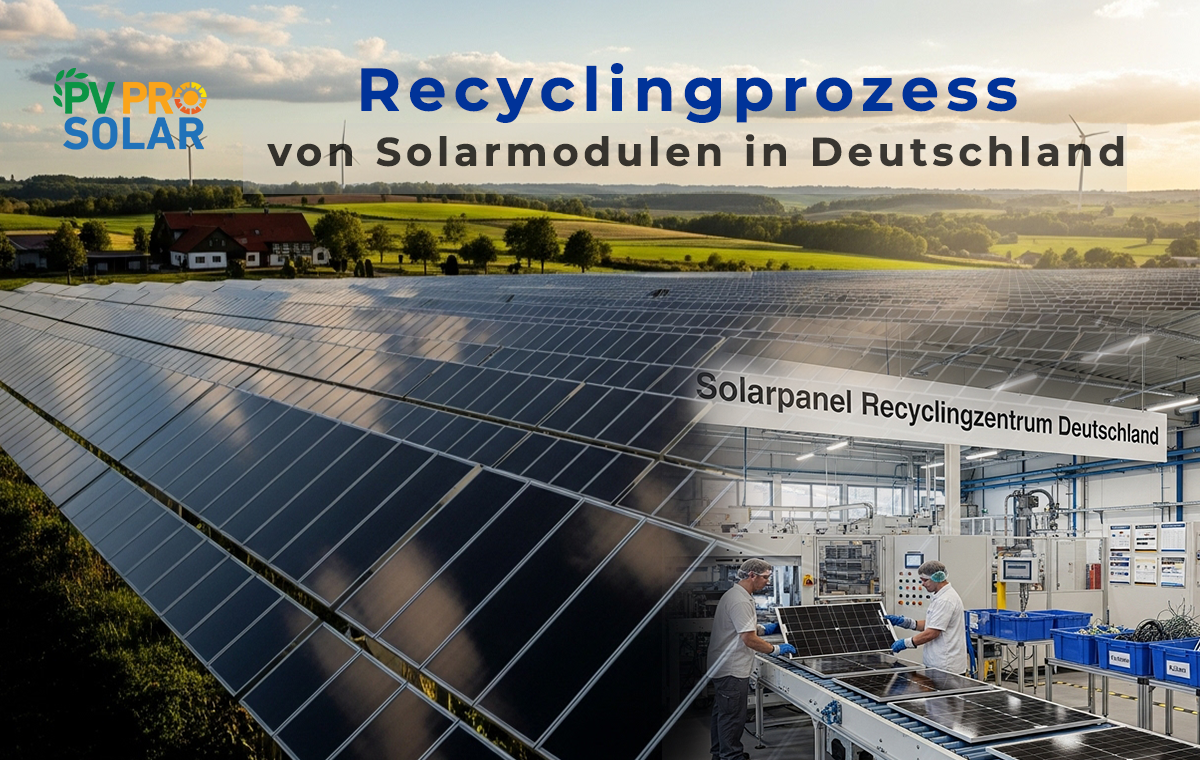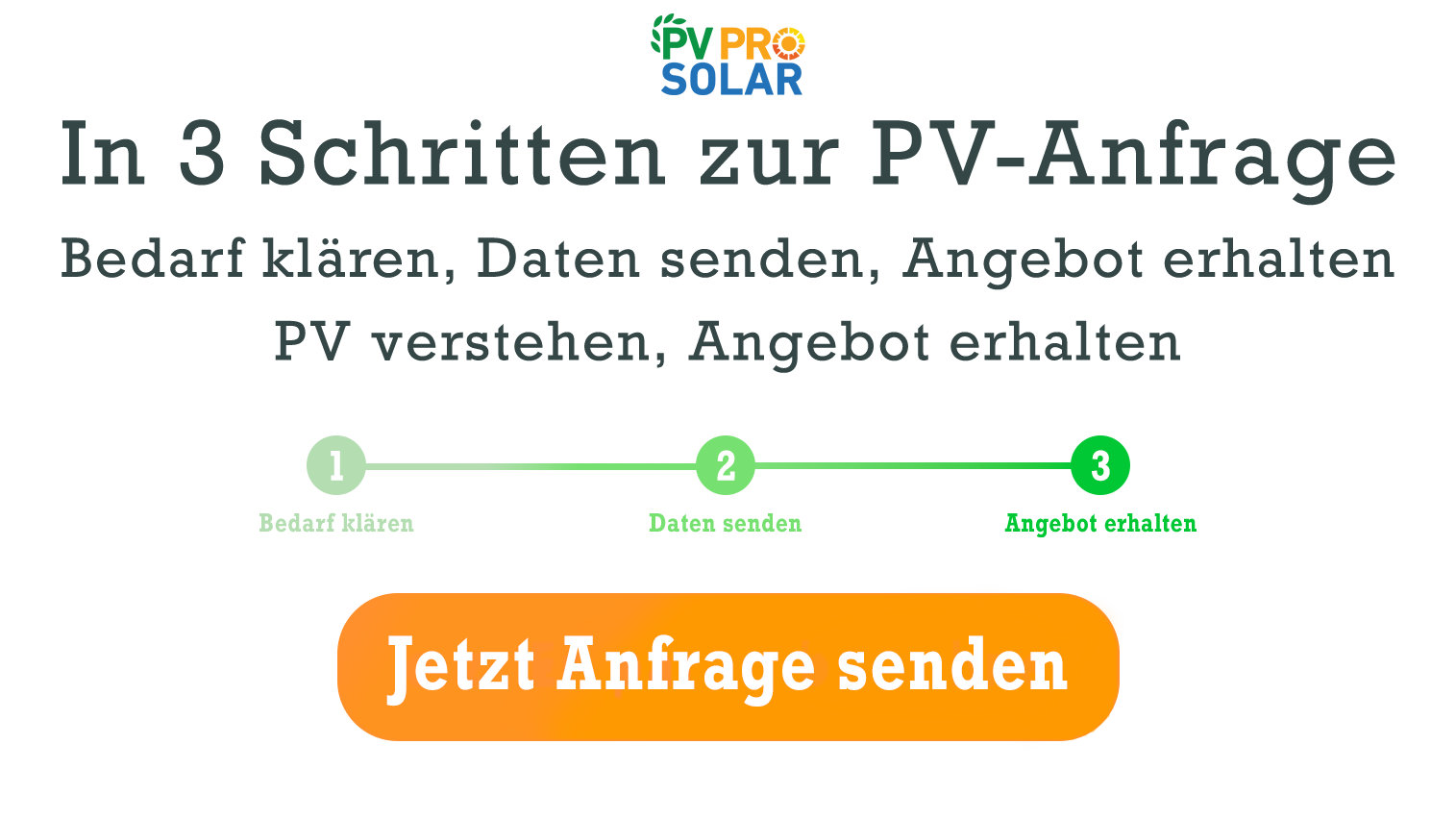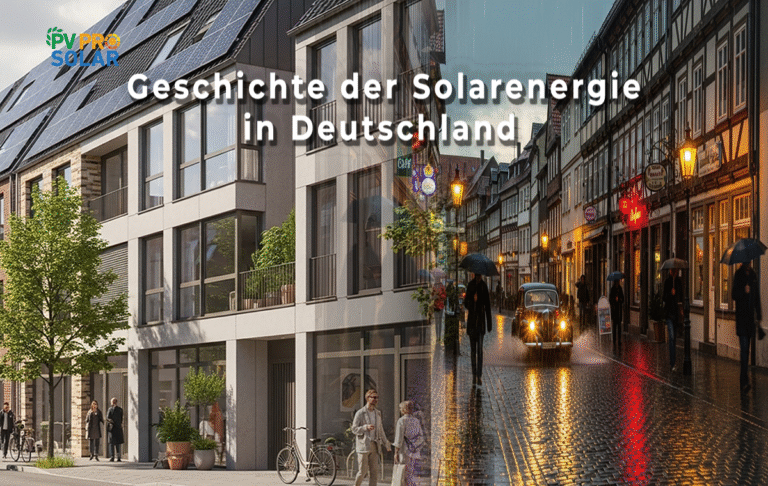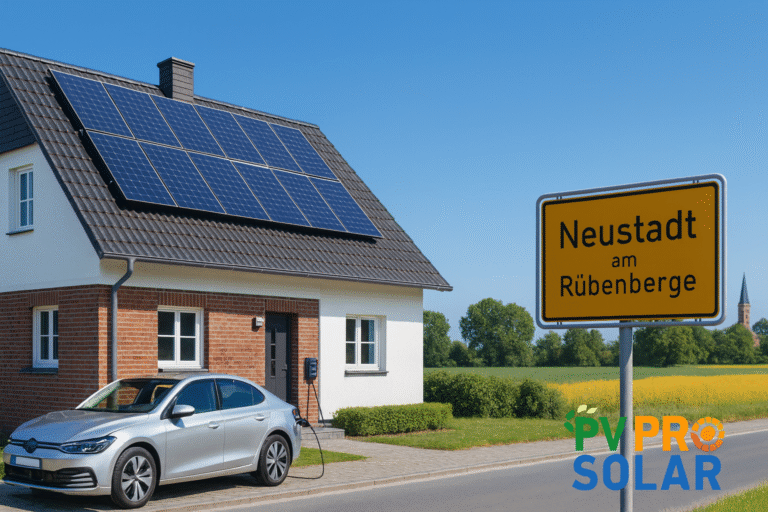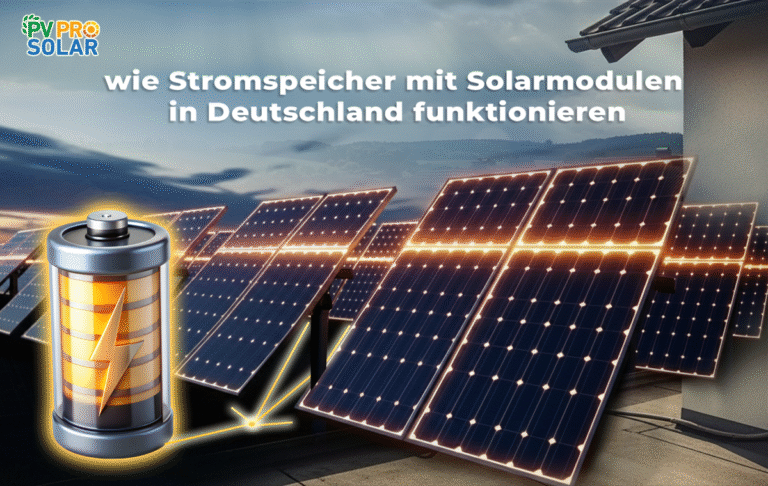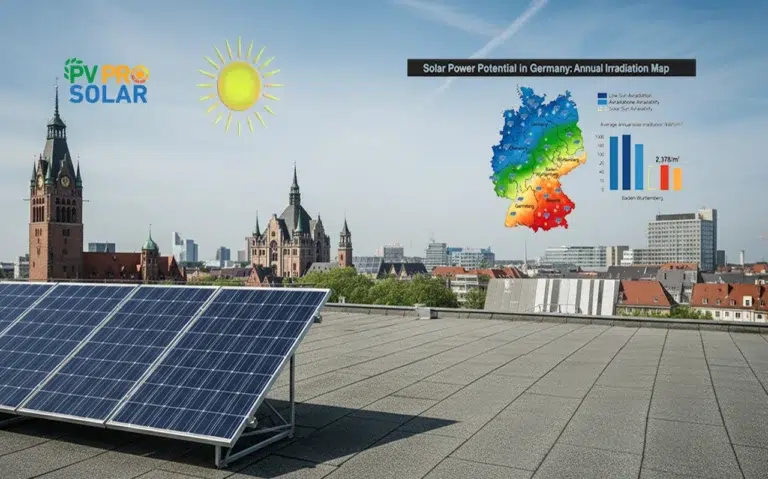Solar Panel Recycling Process in Germany – How Does It Really Work?
Germany is heavily investing in renewable energy. Photovoltaics play a central role. Millions of solar panels are already installed, and hundreds of thousands are added every year. But solar panels have a limited lifespan. After about 20 to 30 years, they lose efficiency and must be replaced. The question of how these old panels are disposed of and recycled is becoming increasingly important. The solar panel recycling process in Germany secures valuable raw materials, protects the environment, and is essential for the sustainability of the energy transition.
What is the solar panel recycling process in Germany?
The recycling process includes all steps through which old photovoltaic panels are collected, treated, and their materials reused. The goal is to recover raw materials such as glass, aluminum, silicon, and metals. Germany has a strictly regulated system to ensure that solar panels do not end up as hazardous waste but are instead reintroduced into the materials cycle.
Why is solar panel recycling necessary?
- Every year, tens of thousands of tons of discarded solar panels accumulate in Europe.
- Without recycling, large amounts of waste would be generated and valuable resources lost.
- Manufacturing new panels requires high amounts of energy and resources. Recycling reduces this demand.
- Recycling prevents illegal disposal and related environmental damage.
What materials do solar panels contain, and why are they valuable?
A typical crystalline panel consists of:
- Glass (around 70% of weight)
- Aluminum frame (10–15%)
- Plastics, films, and encapsulation materials
- Silicon cells
- Metals such as silver, copper, tin
Many of these raw materials are expensive or limited in availability. Silver and silicon are particularly valuable since they are crucial for conductivity and energy conversion.
How does the recycling process of crystalline silicon solar panels work?
The process includes several steps:
- Disassembly – Aluminum frames and junction boxes are removed.
- Shredding – The panels are mechanically crushed.
- Separation of materials – Glass is separated, metals are filtered out.
- Thermal treatment – Plastics are dissolved by heating.
- Recovery of silicon – Silicon cells are cleaned and can be reused.
Recycling plants in Germany achieve recovery rates of over 90%.
How does the recycling process of thin-film solar panels differ?
Thin-film panels consist of glass, semiconductor layers (e.g., cadmium telluride or CIGS), and plastics. Their recycling is more complex:
- Chemical processes dissolve the thin metal layers from the glass.
- Valuable metals such as indium, gallium, or selenium are extracted.
- The glass can be reused after treatment.
What role do specialized recycling companies in Germany play?
Germany has companies specialized in the recycling of solar panels. Examples include:
- Veolia Umweltservice
- Reiling GmbH & Co. KG
- PV Cycle Germany
These companies collect, dismantle, and recycle solar panels according to legal requirements.
What legal requirements exist for solar panel recycling?
Key regulations include:
- ElektroG (Electrical and Electronic Equipment Act) – regulates collection and recycling.
- WEEE Directive (Waste Electrical and Electronic Equipment Directive) – valid across the EU.
- Manufacturers must provide collection and recycling systems.
What obligations do manufacturers and installation companies in Germany have?
- Manufacturer’s obligation: Free take-back of old panels.
- Registration: Each panel must be registered with Stiftung EAR.
- Installation companies: Must inform customers about return options.
How does the return of old solar panels work in practice?
- Panels can be returned at municipal collection points.
- Manufacturers provide their own take-back systems.
- Recycling companies collect larger quantities directly from installation firms.
What technologies and methods are used in the recycling process?
- Mechanical processes – shredding and sorting.
- Thermal processes – heating to remove plastics.
- Chemical processes – acids or solvents for metal recovery.
- Laser and plasma processes – innovative approaches in research.
What is the recycling rate of solar panels in Germany?
- Glass: up to 95%
- Aluminum: almost 100%
- Silicon: 80–90%
- Silver, copper: up to 95%
In total, 85–95% of a panel can be recycled.
What economic opportunities does solar panel recycling offer?
- Recovery of valuable raw materials reduces import dependency.
- Recycling creates jobs in the environmental sector.
- Secondary raw materials are often cheaper than primary ones.
- German companies can position themselves as technology leaders.
What challenges exist in the current recycling process?
- Different panel types complicate standardized procedures.
- Recycling costs are often higher than the raw material value.
- Lack of collection infrastructure in rural areas.
- High energy consumption in some processes.
What research and innovations are improving solar panel recycling?
- New separation processes with lower energy use.
- Robot-assisted disassembly for efficiency.
- Chemical recycling methods for purer material recovery.
- EU-funded projects to develop closed-loop systems.
What role does the EU WEEE Directive play in solar panel recycling?
The WEEE Directive requires the collection and environmentally sound treatment of electronic waste across Europe. Since 2012, solar panels have been included under this regulation. This obliges manufacturers and importers to establish recycling structures.
How are solar panel recycling costs developing in Germany?
- Currently between 10 and 25 euros per panel.
- Prices vary by panel type and recycling method.
- With increasing volumes, costs are expected to decrease due to economies of scale.
- Political subsidies could make recycling more financially attractive.
How can homeowners dispose of their old solar panels?
- Return to regional recycling centers.
- Contacting the installer or manufacturer.
- Use of take-back systems (e.g., PV Cycle).
- Collection by specialized firms for large quantities.
What environmental benefits does solar panel recycling bring?
- Conservation of primary resources.
- Reduction of CO₂ emissions.
- Avoidance of hazardous waste.
- Protection of ecosystems through less raw material extraction.
Which cities and regions in Germany are leaders in the recycling process?
- North Rhine-Westphalia: many recycling plants.
- Saxony-Anhalt: research projects on recycling methods.
- Bavaria and Baden-Württemberg: cooperation with manufacturers and universities.
- Hamburg and Bremen: port locations for international recycling transport.
What is the future of solar panel recycling in Germany?
- Growing volumes of old panels from 2030 onwards.
- Expansion of specialized recycling facilities.
- Higher recovery rates through technological progress.
- Stronger integration of photovoltaics, the circular economy, and climate goals.
The solar panel recycling process in Germany is a key factor for a sustainable energy transition. Modern technologies allow up to 90% of materials to be recovered. Manufacturers, installers, and homeowners share responsibility. With growing volumes of old panels, innovation and regulation will further improve recycling. Investing in photovoltaics today also means investing in a future where resources are reused and environmental impacts are minimized.
Manufacturers and importers are legally obligated to take back old panels and recycle them properly. End users can dispose of panels at recycling centers or via take-back systems.
Depending on technology, between 85 and 95 percent of materials can be recovered. Glass and aluminum can almost completely be recycled. Who is responsible for solar panel recycling in Germany?
What percentage of a solar panel can be recycled?
